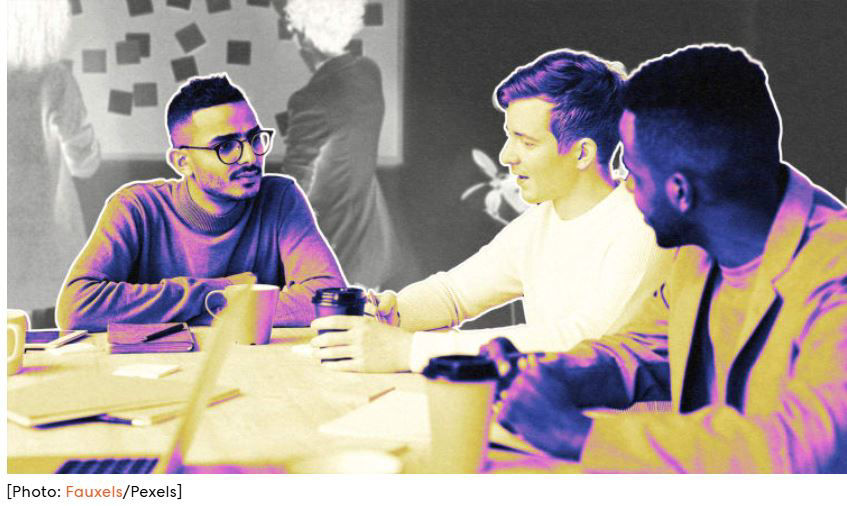4 min read//
Storytelling is one of the most effective ways to build connections and develop trust and cooperation amongst teams.
Telling stories to one another enhances the value of our communication because stories evoke emotions which develop strong bonds between members of a team. While we often forget the content of conversations we have in meetings, stories stick and stay with us.
In fact, Dutch researchers have concluded that sharing a common story helps teams collaborate better. “Given the power of narration to capture complex experiences, a storytelling culture may contribute to reducing difficulties in communication and conflict situations, and augment continuous learning,” reads their research. “Overall, we believe that we have offered a stimulating first step in theory building for the study of team effectiveness from the perspective of narrative reflection.”
Here’s why storytelling strengthens workplace teams.
The benefits of telling stories
We likely can all remember a time when we were in a meeting that dragged on and we had difficulty staying engaged. On the other hand, we are much more likely to remember when someone told us an engaging story. Stories are a way of developing cohesion amongst a team because shared experiences form bonds that result in a deeper sense of belonging. They can also invigorate teams and align them with the vision and mission of the organization. This can result in increased levels of motivation and engagement as teams begin to see their own success aligning with the overall success of the organization.
“Stories have the ability to align a team using a shared experience, which is why I like to start every meeting with one person telling a brief story,” says career coach, Mark Cruth. “It’s like a tuning fork. This ‘shared consciousness’ that’s created through telling a powerful story helps a team create connection and empathy, which are incredibly valuable when doing complex teamwork.”
Examples of storytelling at work
While workplaces are becoming increasingly disruptive due to technological innovation and speed of change, stories can become a source of stability, safety, and empowerment. For instance, sharing a vision of change and what the world can be like in the future through stories can serve as a calming and inspiring boost of confidence for team members.
And by sharing stories of overcoming challenges, team members are able to focus on their strengths and shared achievements which builds resilience and a common belief that they will be able to surmount anything that comes their way. Sharing successes, experiences, and lessons learned in an informal open manner promotes creativity and innovation by stimulating dialogue and builds an environment of continuous learning and improvement for all team members.
Openness and the ability to share personal stories can help build understanding and cohesion amongst team members of diverse backgrounds. Learning about each other and hearing their unique viewpoints helps all members appreciate each other’s uniqueness and the contributions that they bring to the team. While contributing to better understanding of one another, storytelling also brings awareness to team members of how much they share and have in common. This builds a sense of shared community, identity, and purpose within a team.
While disagreements will come up, a sense of shared community, identity, and purpose can help teams more smoothly work through difficulties and conflicts. The result of shared stories ends up building a sense of inclusiveness in which all members feel safe, heard and valued.
Telling our own stories
An increasingly common example of how workers are sharing their stories at work is by creating personal user manuals, in which a colleague can quickly learn about a person’s personal background, career path, and preferred working style.
“The best way to get to know your team members is by building personal user manuals within your team. When we purchase any sort of electronic we are given a user manual to learn how to interact with it, but when we have a new person join our team there are no instructions,” says Cruth. “A personal user manual allows each team member to share their story, including what they love, loath, and what brings them back to center, which creates a stronger team connection.”
Such personal user manuals can be an especially valuable form of storytelling for new colleagues. Joining a new team can be a time of stress and anxiety as workers wonder how they will fit in and if they belong. Storytelling gives them insight into the culture of the team and organization and eases their transition period. It will bring a feeling of openness, support for one another and shared experiences that will more quickly make them feel as if they fit it and belong.
Workplaces can feel impersonal, cold, and distant. Sharing personal narratives with team members is an opportunity to increase empathy and team bonding. Having the ability to express themselves freely, while feeling safe and supported allows workers to express ideas that they might otherwise not share. This allows creativity to flourish as members have a sense that their shared bonds, forged through storytelling, will mean their contributions will be acknowledged and appreciated.











